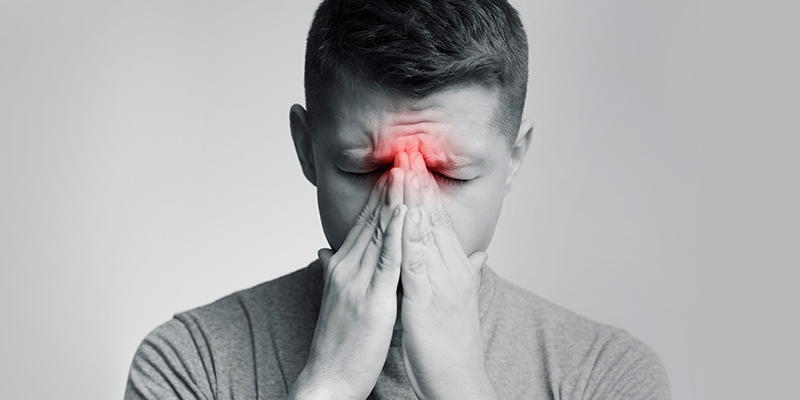If you have suffered from sinusitis symptoms such as frequent headaches, facial pressure, and nasal congestion, you know how uncomfortable a sinus infection can get. Anyone who has had a sinus infection also knows that the symptoms worsen in winter. While the symptoms of sinusitis are often similar to that of common cold, they require different courses of action in order to be treated, which why it is important to determine which one you are affected by. While the common cold has no specific cure and usually heals within 7 – 10 days on its own, sinusitis can progress if left untreated and lead to further health complications.
What is Sinusitis?
Sinusitis, also known as a sinus infection, refers to an inflammation or swelling in the tissues lining the sinus passages. Paranasal sinuses are hollow spaces within the bones between your eyes (ethmoidal sinuses), below your eyes (maxillary sinuses), behind your eyes (sphenoidal sinuses), and above your eyes (frontal sinuses). These sinuses produce mucus that keeps our nostrils moist, which in turns keeps it protected from dust, allergens, and pollutants.
Healthy sinuses are filled with air, but when they are blocked and filled with fluid, it may lead to infections due to germs. There are hair-like structures known as cilia present in the nose that push the mucus for drainage. But, in case of sinus infection, the mucus cannot be drained due to the swelling of the sinus passages.
What causes Sinusitis?
Some of the most common causes of Sinusitis include:
- Common cold
- Allergic rhinitis
- Nasal polyps (small growths in the lining of the nose)
- Deviated septum (disfigured nasal cavity)
Types of Sinusitis:

- Acute sinusitis: This type of sinusitis begins suddenly and lasts for about 2 to 4 weeks
- Subacute sinusitis: This usually lasts from 4 to 12 weeks.
- Chronic sinusitis: This lasts for more than 12 weeks and can be a hindrance to your quality of life.
- Recurrent sinusitis: This type of sinus infection occurs several times a year.
How can you identify Sinusitis?
Though the symptoms of sinusitis and common cold are alarmingly similar, the type and severity of the symptoms may vary. The common symptoms of Sinusitis include:
- Postnasal drip (mucus dripping down the throat)
- Stuffy nose
- Thick yellow or green discharge from the nose (nasal discharge caused due to cold is runny)
- Frequent headaches
- Pain in the jaws and teeth
- Bad breath
- Fatigue
- Cough
- Fever in some cases
Treating Sinusitis:
If you have sinusitis, it is important to immediately consult a doctor to avoid the worsening of symptoms. For treatment, your doctor may prescribe or suggest the use of a nasal spray for sinuses such as the Naselin nasal spray. However, you must make sure that you don’t use the decongestant spray for more than 3 days, as it may lead to rebound congestion. Your doctor may also prescribe antibiotics along with other medicines based on your symptoms.
You can also take preventive measures to keep sinusitis at bay such as avoiding smoking, washing your hands often, being on top of your allergies, and avoiding people with colds. Remember, prevention is always better than cure!



